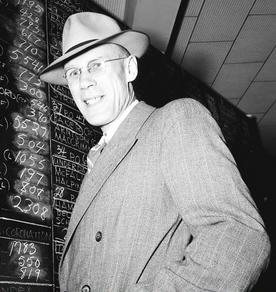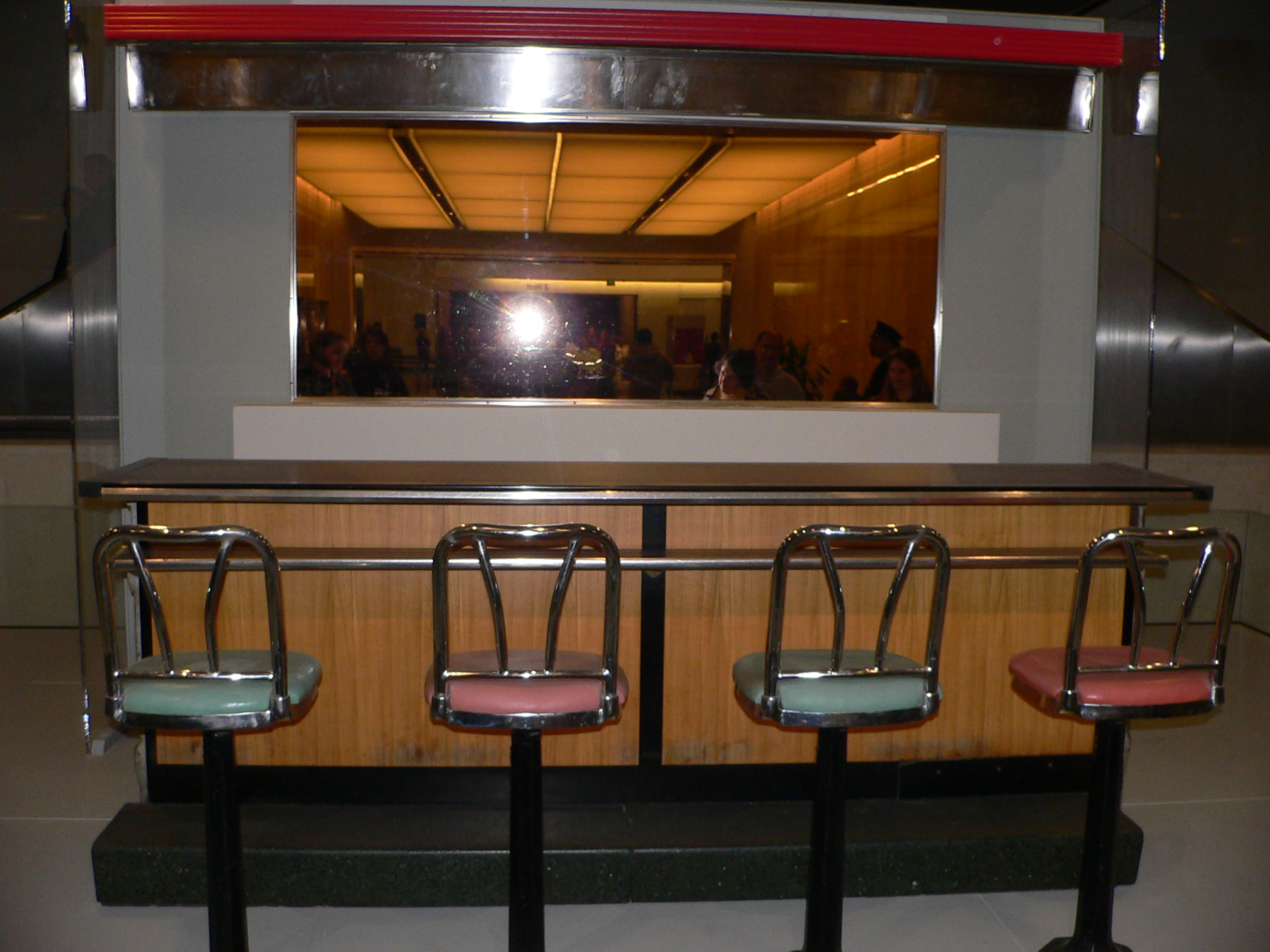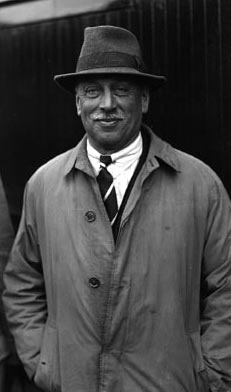|
Elizabeth G. Robinson
Elizabeth Gladys Robinson (May 28, 1899 – October 21, 1960) was a provincial politician from Alberta, Canada. Following the death of her husband SC MLA John Lyle Robinson, she served as a Social Credit member of the Legislative Assembly of Alberta from 1953 until her death in 1960, representing Medicine Hat Medicine Hat is a city in Southern Alberta, southeast Alberta, Canada. It is located along the South Saskatchewan River. It is approximately east of Lethbridge and southeast of Calgary. This city and the adjacent Town of Redcliff, Alberta, R .... Political career Robinson ran in a provincial by-election in the Medicine Hat electoral district on December 19, 1953, after her husband John Lyle Robinson died on October 29, 1953. John Robinson was a SC cabinet minister and MLA for the Medicine Hat district. Elizabeth Robinson won the 1953 by-election by a wide margin with almost 77% of the vote in a straight fight over E.W. Horne running under the Co-operative Commonwe ... [...More Info...] [...Related Items...] OR: [Wikipedia] [Google] [Baidu] |
Medicine Hat
Medicine Hat is a city in Southern Alberta, southeast Alberta, Canada. It is located along the South Saskatchewan River. It is approximately east of Lethbridge and southeast of Calgary. This city and the adjacent Town of Redcliff, Alberta, Redcliff to the northwest are within Cypress County. Medicine Hat was the List of cities in Alberta, eighth-largest city in Alberta in 2021 with a population of 63,271. It is also the sunniest place in Canada according to Environment and Climate Change Canada, averaging 2,544 hours of sunshine a year. Started as a railway town, today Medicine Hat is served by the Trans-Canada Highway (Alberta Highway 1, Highway 1) and the eastern terminus of the Crowsnest Highway (Alberta Highway 3, Highway 3). Nearby communities considered part of the Medicine Hat area include the Town of Redcliff (abutting the city's northwest boundary) and the hamlets of Desert Blume, Dunmore, Alberta, Dunmore, Irvine, Alberta, Irvine, Seven Persons, and Veinervil ... [...More Info...] [...Related Items...] OR: [Wikipedia] [Google] [Baidu] |
Alberta New Democratic Party
The Alberta New Democratic Party (Alberta NDP; ), is social democratic political party in Alberta, Canada. The party sits on the centre-left to left-wing of the political spectrum and is a provincial Alberta affiliate of the federal New Democratic Party. The successor to the Alberta section of the Co-operative Commonwealth Federation and the even earlier Alberta wing of the Canadian Labour Party and the United Farmers of Alberta. From the mid-1980s to 2004, the party abbreviated its name as the "New Democrats" (ND). The party served as Official Opposition in the Legislative Assembly of Alberta from 1982 to 1993. It was shut out of the legislature following the 1993 election, returning in the 1997 election with two seats. The party won no more than four seats in subsequent elections until the 2015 election, in which it won 54 of the 87 seats in the legislature and formed a majority government. Until 2015, Alberta had been the only province in western Canada—the party's b ... [...More Info...] [...Related Items...] OR: [Wikipedia] [Google] [Baidu] |
Women MLAs In Alberta
A woman is an adult female human. Before adulthood, a female child or adolescent is referred to as a girl. Typically, women are of the female sex and inherit a pair of X chromosomes, one from each parent, and women with functional uteruses are capable of pregnancy and giving birth from puberty until menopause. More generally, sex differentiation of the female fetus is governed by the lack of a present, or functioning, ''SRY'' gene on either one of the respective sex chromosomes. Female anatomy is distinguished from male anatomy by the female reproductive system, which includes the ovaries, fallopian tubes, uterus, vagina, and vulva. An adult woman generally has a wider pelvis, broader hips, and larger breasts than an adult man. These characteristics facilitate childbirth and breastfeeding. Women typically have less facial and other body hair, have a higher body fat composition, and are on average shorter and less muscular than men. Throughout human history, traditional ge ... [...More Info...] [...Related Items...] OR: [Wikipedia] [Google] [Baidu] |
1960 Deaths
It is also known as the "Year of Africa" because of major events—particularly the independence of seventeen African nations—that focused global attention on the continent and intensified feelings of Pan-Africanism. Events January * January 1 – Cameroon becomes independent from France. * January 9–January 11, 11 – Aswan Dam construction begins in Egypt. * January 10 – Prime Minister of the United Kingdom, British Prime Minister Harold Macmillan makes the Wind of Change (speech), "Wind of Change" speech for the first time, to little publicity, in Accra, Gold Coast (British colony), Gold Coast (modern-day Ghana). * January 19 – A revised version of the Treaty of Mutual Cooperation and Security between the United States and Japan ("U.S.-Japan Security Treaty" or "''Anpo (jōyaku)''"), which allows U.S. troops to be based on Japanese soil, is signed in Washington, D.C. by Prime Minister Nobusuke Kishi and President Dwight D. Eisenhower. The new treaty is opposed by t ... [...More Info...] [...Related Items...] OR: [Wikipedia] [Google] [Baidu] |
1899 Births
Events January * January 1 ** Spanish rule formally ends in Cuba with the cession of Spanish sovereignty to the U.S., concluding 400 years of the Spanish Empire in the Americas.''The American Monthly Review of Reviews'' (February 1899), pp. 153-157 ** In Samoa, followers of Mataafa, claimant to the rule of the island's subjects, burn the town of Upolu in an ambush of followers of other claimants, Malietoa Tanus and Tamasese, who are evacuated by the British warship HMS ''Porpoise''. ** Queens and Staten Island become administratively part of New York City. * January 2 – Theodore Roosevelt is inaugurated as Governor of New York at the age of 39. * January 3 – A treaty of alliance is signed between Russia and Afghanistan. * January 5 – **A fierce battle is fought between American troops and Filipino defenders at the town of Pililla on the island of Luzon. *The collision of a British steamer and a French steamer kills 12 people on the English Channel. * Jan ... [...More Info...] [...Related Items...] OR: [Wikipedia] [Google] [Baidu] |
Alberta Social Credit Party MLAs
Alberta is a province in Canada. It is a part of Western Canada and is one of the three prairie provinces. Alberta is bordered by British Columbia to its west, Saskatchewan to its east, the Northwest Territories to its north, and the U.S. state of Montana to its south. Alberta and Saskatchewan are the only two landlocked Canadian provinces. The eastern part of the province is occupied by the Great Plains, while the western part borders the Rocky Mountains. The province has a predominantly continental climate, but seasonal temperatures tend to swing rapidly because it is so arid. Those swings are less pronounced in western Alberta because of its occasional Chinook winds. Alberta is the fourth largest province by area, at , and the fourth most populous, with 4,262,635 residents. Alberta's capital is Edmonton; its largest city is Calgary. The two cities are Alberta's largest census metropolitan areas. More than half of Albertans live in Edmonton or Calgary, which encourages a con ... [...More Info...] [...Related Items...] OR: [Wikipedia] [Google] [Baidu] |
1959 Alberta General Election
The 1959 Alberta general election was held on June 18, 1959, to elect members of the Legislative Assembly of Alberta. Ernest C. Manning, in his fifth election as party leader and provincial premier, led the Social Credit Party to its seventh consecutive term in government, with 55% of the popular vote, and all but four of the sixty five seats in the legislature. Social Credit was also helped by a split in the opposition vote: whereas in the 1955 election, opponents were largely united behind the Liberal Party, in this election the vote was divided between the Liberals and the resurgent Progressive Conservative Party under the leadership of Cam Kirby, won almost 15% of the popular vote, placing ahead of the Liberals whose leader, Grant MacEwan lost his Calgary seat. The Tories and Liberals each won only one seat in the legislature while the Alberta CCF was shut out of the legislature for the first time in seventeen years. The other two opposition seat were taken by a Coalit ... [...More Info...] [...Related Items...] OR: [Wikipedia] [Google] [Baidu] |
1955 Alberta General Election
The 1955 Alberta general election was held on June 29, 1955, to elect members of the Legislative Assembly of Alberta. Despite losing almost 10% of the popular vote (compared to its 1952 proportion of the vote) and 30% of its seats in the legislature, the Social Credit Party, led by Ernest C. Manning, received a slightly higher number of votes than in 1952 and won a comfortable majority for its sixth term in government. The Liberal Party emerged as the principal opposition to the Social Credit juggernaut, winning over 30% of the popular vote, and increasing its legislative caucus from 4 members to 15. The Cooperative Commonwealth Federation won two seats. However its leader, MLA Elmer Roper, was defeated, ending his thirteen-year career in the legislature. Three Conservative Party candidates and various independents also won seats. This provincial election, like the previous seven, saw district-level proportional representation (Single transferable voting) used to elect the ML ... [...More Info...] [...Related Items...] OR: [Wikipedia] [Google] [Baidu] |
Legislative Assembly Of Alberta
The Legislative Assembly of Alberta is the deliberative assembly of the province of Alberta, Canada. It sits in the Alberta Legislature Building in Edmonton. Since 2012 the Legislative Assembly has had 87 members, elected first past the post from single-member electoral districts. Bills passed by the Legislative Assembly are given royal assent by the lieutenant governor of Alberta, as the viceregal representative of the King of Canada. The Legislative Assembly and the Lieutenant Governor together make up the unicameral Alberta Legislature. The maximum period between general elections of the assembly, as set by Section 4 of the Canadian Charter of Rights and Freedoms is five years, which is further reinforced in Alberta's ''Legislative Assembly Act''. Convention dictates the premier controls the date of election and usually selects a date in the fourth or fifth year after the preceding election. Amendments to Alberta's ''Election Act'' introduced in 2024 fixed the date of ... [...More Info...] [...Related Items...] OR: [Wikipedia] [Google] [Baidu] |
Alberta
Alberta is a Provinces and territories of Canada, province in Canada. It is a part of Western Canada and is one of the three Canadian Prairies, prairie provinces. Alberta is bordered by British Columbia to its west, Saskatchewan to its east, the Northwest Territories to its north, and the U.S. state of Montana to its south. Alberta and Saskatchewan are the only two landlocked Canadian provinces. The eastern part of the province is occupied by the Great Plains, while the western part borders the Rocky Mountains. The province has a predominantly humid continental climate, continental climate, but seasonal temperatures tend to swing rapidly because it is so arid. Those swings are less pronounced in western Alberta because of its occasional Chinook winds. Alberta is the fourth largest province by area, at , and the fourth most populous, with 4,262,635 residents. Alberta's capital is Edmonton; its largest city is Calgary. The two cities are Alberta's largest Census geographic units ... [...More Info...] [...Related Items...] OR: [Wikipedia] [Google] [Baidu] |
Social Credit
Social credit is a distributive philosophy of political economy developed in the 1920s and 1930s by C. H. Douglas. Douglas attributed economic downturns to discrepancies between the cost of goods and the compensation of the workers who made them. To combat what he saw as a chronic deficiency of purchasing power in the economy, Douglas prescribed government intervention in the form of the issuance of debt-free money directly to consumers or producers (if they sold their product below cost to consumers) in order to combat such discrepancy. In defence of his ideas, Douglas wrote that "Systems were made for men, and not men for systems, and the interest of man which is self-development, is above all systems, whether theological, political or economic." Douglas said that Social Crediters want to build a new civilization based upon " absolute economic security" for the individual, where "they shall sit every man under his vine and under his fig tree; and none shall make them afraid ... [...More Info...] [...Related Items...] OR: [Wikipedia] [Google] [Baidu] |
Social Credit Party Of Alberta
Alberta Social Credit was a provincial political party in Alberta, Canada, that was founded on social credit monetary policy put forward by Clifford Hugh Douglas and on conservative Christian social values. The Canadian social credit movement was largely an out-growth of Alberta Social Credit. The Social Credit Party of Canada was strongest in Alberta, before developing a base in Quebec when Réal Caouette agreed to merge his Ralliement créditiste movement into the federal party. The British Columbia Social Credit Party formed the government for many years in neighbouring British Columbia, although this was effectively a coalition of centre-right forces in the province that had no interest in social credit monetary policies. The Alberta Social Credit party won a majority government in 1935, in the first election it contested, barely months after its formation. During its first years, when led by William Aberhart, it was a radical monetary reform party, at least in theory if not ... [...More Info...] [...Related Items...] OR: [Wikipedia] [Google] [Baidu] |











